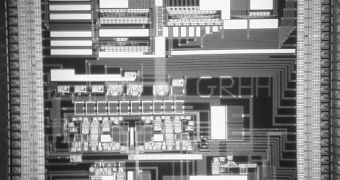One of the most difficult issues to resolve when it came to constructing an artificial replica of the human brain was that of neural plasticity. This obstacle has now been surpassed, thanks to the work of investigators from the Massachusetts Institute of Technology (MIT), in Cambridge.
What the group was particularly interested in was developing a type of computer system capable of learning new things in the same manner the human brain goes about doing this. Inside our heads, a process called neural plasticity is especially responsible for this ability.
Plasticity, in this context, is a term used to refer to how nerve cells in the brain alter their appearance and function in order to accommodate newly-learned data. What the MIT team did was create a type of artificial system capable of replicating this ability.
Granted, for all of its 400 transistors, the device can currently only emulate the function of a single synapse, but the concept has been proven to work satisfactorily. Synapses are the links connecting neurons, the locations through which electrical signals flow from one nerve cell to the other.
One of the most important applications for such a device will be in the field of neuroscience, where experts will be able to analyze processes that have thus far remained hidden in more detail. The principal investigator of the new study was expert Chi-Sang Poon.
The researcher holds an appointment with the Harvard-MIT Division of Health Sciences and Technology. He is also the senior author of a new paper detailing the device. The work appears in this week's issue of the esteemed journal Proceedings of the National Academy of Sciences (PNAS).
According to the research team, scientists are still many years away from creating an accurate replica of the human brain, simply due to the sheer complexity of the task at hand. There are roughly 100 billion neurons in each brain, which are tied to each other with trillions of synapses.
Some neurons can grow to be about 10 centimeters in lengths, and can eventually make synapses with up to 10,000 other neurons. This level of complexity is ming-boggling and not easily replicated. However, the new investigation does add to a handful of other promising advancements made thus far.
The tool the team develops is a “significant advance in the efforts to incorporate what we know about the biology of neurons and synaptic plasticity onto CMOS [complementary metal-oxide-semiconductor] chips,” Dean Buonomano explains.
The expert holds an appointment as a professor of neurobiology with the University of California in Los Angeles (UCLA). He concludes by saying that “the level of biological realism [in the new device] is impressive.”

 14 DAY TRIAL //
14 DAY TRIAL //